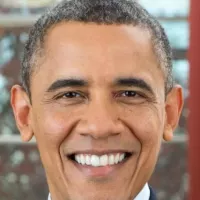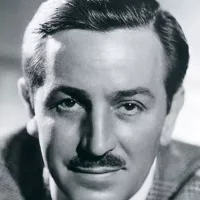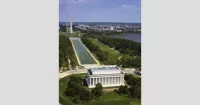Howard University is a private, historically black research university in Washington, D.C., holding an R1 classification for very high research activity. It's accredited by the Middle States Commission on Higher Education. Founded after the Civil War, Howard has played a significant role in African American education and leadership development. The university offers a wide range of programs across various disciplines, including law, medicine, engineering, and the arts. It is a prominent institution in the nation's capital, contributing significantly to research and scholarship.
December 1907: Carnegie Grant for Library
In December 1907, Andrew Carnegie granted Howard University $50,000 to establish its first library, which was located in the Carnegie Building.
1924: First Official Homecoming
Howard University's first official homecoming was held in 1924, an event that now takes place every fall semester with a new theme developed by the homecoming committee.
1924: Calvin Coolidge Speaks at Howard University
In 1924, President Calvin Coolidge delivered a graduation speech at Howard University titled 'The Progress of a People,' emphasizing the achievements of African-Americans since the Civil War.
1924: Founding of The Hilltop Newspaper
In 1924, Zora Neale Hurston founded The Hilltop, Howard University's student newspaper, which has enjoyed a long legacy at the university.
1925: Publication of 'The New Negro'
In 1925, Alain Locke, the chair of the Department of Philosophy at Howard University, authored 'The New Negro,' which played a significant role in initiating the Harlem Renaissance.
1926: Mordecai Wyatt Johnson becomes president
In 1926, Mordecai Wyatt Johnson became the first African-American president of Howard University, a position he held until 1960.
1928: Establishment of Howard University Gallery of Art
In 1928, the Howard University Gallery of Art was established by Howard's board of trustees to serve as an academic resource.
1932: Publication of The Journal of Negro Education Begins
In 1932, Howard University began publishing The Journal of Negro Education.
1942: Students Pioneer 'Stool-Sitting' Technique
In 1942, Howard University students initiated the 'stool-sitting' technique at a local cafeteria that denied service to African Americans, marking an early form of civil rights protest.
January 1943: Organized Sit-ins Begin
Beginning in January 1943, Howard University students organized regular sit-ins and pickets in Washington, D.C., targeting cigar stores and cafeterias that refused service based on race; these protests lasted until the fall of 1944.
1944: End of Sit-in Protests
In the fall of 1944, the sit-in protests organized by Howard University students in Washington, D.C., which had begun in January 1943, came to an end.
1960: End of Mordecai Wyatt Johnson's presidency
In 1960, Mordecai Wyatt Johnson concluded his tenure as the first African-American president of Howard University, a position he had held since 1926.
1965: Griffith Stadium is replaced
In 1965, Griffith Stadium, used since the 1890s, was replaced as Howard University Hospital was built on its site.
1965: Lyndon B. Johnson Speaks at Howard University
In 1965, President Lyndon B. Johnson addressed Howard University's graduating class, outlining civil rights legislation plans and advocating for affirmative action to address the historical segregation's economic impacts on Black citizens.
1975: Freedman's Hospital Closes, Howard University Hospital Opens
In 1975, Freedman's Hospital closed after 112 years as Howard University College of Medicine's primary teaching hospital, and Howard University Hospital opened that same year, continuing as the primary teaching hospital.
1975: Howard University Hospital Opens
In 1975, Howard University Hospital opened on the eastern end of campus, built on the site of Griffith Stadium.
1975: Jeanne Sinkford Appointed First Female Dental School Dean
In 1975, Jeanne Sinkford became the first female dean of any American dental school when she was appointed as the dean of Howard University's school of dentistry.
1976: Birth of the 'Quiet Storm' Radio Format
In 1976, WHUR-FM at Howard University became the birthplace of the quiet storm late-night radio format, created by student intern Melvin Lindsey and named after the Smokey Robinson song and album "Quiet Storm" and "A Quiet Storm".
1986: Rhodes Scholars
From 1986 to 2017, Howard University produced four Rhodes Scholars.
1989: Student Protest Against Lee Atwater Appointment
In 1989, Howard University students protested the appointment of Republican National Committee Chairman Lee Atwater to the board of trustees, leading to disruptions and the eventual resignations of both Atwater and the university's President, James E. Cheek.
1993: Ralph J. Bunche International Affairs Center Founded
In 1993, The Ralph J. Bunche International Affairs Center (RBC) was founded to enhance international engagement for the Howard University community.
1997: Absorption of the College of Fine Arts
In 1997, the College of Fine Arts was absorbed into the College of Arts & Sciences, leading to protests led by Chadwick A. Boseman.
1998: Marshall and Truman Scholars
Between 1998 and 2009, Howard University produced a Marshall Scholar, two Truman Scholars, twenty-two Fulbright Scholars, and ten Pickering Fellows.
April 2007: Faculty Senate Calls for President's Ouster
In April 2007, the head of the faculty senate at Howard University called for the removal of President H. Patrick Swygert, citing concerns over incompetence and dysfunction.
May 2008: Sidney Ribeau Announced as New President
In May 2008, Howard University announced that Sidney Ribeau of Bowling Green State University would succeed H. Patrick Swygert as president.
June 2008: Swygert Retires
In June 2008, H. Patrick Swygert retired as president of Howard University.
2009: Fulbright and Pickering Fellows
Between 1998 and 2009, Howard University produced a Marshall Scholar, two Truman Scholars, twenty-two Fulbright Scholars, and ten Pickering Fellows.
2013: Allegations of Crisis at Howard University
In 2013, Howard University faced allegations of being in crisis, with criticisms from the board of trustees and the Council of Deans regarding fiscal mismanagement. In October, the faculty voted no confidence in the university's board of trustees executive committee after President Sidney A. Ribeau announced his retirement.
July 2014: Wayne A. I. Frederick Named President
In July 2014, Howard's Board of Trustees officially named Wayne A. I. Frederick as the school's 17th president, after he served as interim president since October 1, 2013.
May 2016: Obama's Commencement Address
In May 2016, President Barack Obama delivered a commencement address at Howard University, encouraging graduates to advocate for racial change and prepare for future challenges.
2016: Return of Yardfest
After a two-year hiatus, Yardfest returned in 2016 as one of the cherished traditions of Howard University's Homecoming week.
2016: Opening of the Interdisciplinary Research Building
In 2016, Howard University's Interdisciplinary Research Building (IRB) opened, a state-of-the-art research facility.
2017: Rhodes Scholars
From 1986 to 2017, Howard University produced four Rhodes Scholars.
2017: Howard University West Pilot Program Established by Google
In 2017, Google Inc. established a pilot residency program named 'Howard University West' on its campus in Mountain View, California.
2017: Bison STEM Scholars Program Established
In 2017, Howard established the Bison STEM Scholars Program to increase the number of underrepresented minorities with high-level research careers in STEM fields.
2018: Student Sit-In Over Misused Funds
In 2018, nearly 1,000 Howard University students held a sit-in to protest the administration's use of funding, after a post revealed employees were fired for financial aid fraud. The protest led to promises from the university, an investigation by the Department of Education, and the university being placed on 'heightened cash monitoring.'
2018: 'Howard University West' Program Expands and Renamed 'Tech Exchange'
In 2018, the 'Howard University West' program expanded to a full academic year program and was renamed 'Tech Exchange' to include other minority-serving institutions.
July 2020: MacKenzie Scott Donates $40 Million
In July 2020, philanthropist MacKenzie Scott donated $40 million to Howard University, which became the largest single donation in the university's history.
2020: Financial Aid Statistics
In 2020, 82% of first-year students at Howard University received need-based financial aid.
2020: Chadwick Boseman's Death
In 2020, Chadwick A. Boseman, a Howard University alumnus and advocate for the College of Fine Arts, passed away from cancer.
2020: Bison STEM Scholars Program Renamed
In 2020, the Bison STEM Scholars Program was renamed the Martha and Bruce Karsh Stem Scholars Program (KSSP) following a $10 million donation.
May 2021: College of Fine Arts Named After Chadwick A. Boseman
In May 2021, Howard University announced that the newly re-established college of fine arts would be named the Chadwick A. Boseman College of Fine Arts, honoring the actor and alumnus.
October 2021: Student Protest Over Housing Conditions
In October 2021, Howard University students protested the substandard living conditions in campus residential buildings, demanding improvements and representation on the board of trustees in the Blackburn Takeover.
2021: Freshman Class Applications
In the fall of 2021, Howard University received 29,391 applications for the incoming freshman class, with an acceptance rate of 35%, totaling 10,362 students.
March 2022: Howard University Announces $785 Million Investment
In March 2022, Howard University announced plans to invest $785 million over the next four years to construct new academic buildings and renovate existing ones.
July 2022: Disney Storytellers Fund Established
In July 2022, The Walt Disney Company established the Disney Storytellers Fund at Howard University's Cathy Hughes School of Communications and the Chadwick A. Boseman College of Fine Arts to support creative student projects.
October 2022: Disney Storytellers Fund Expands to Other HBCU Campuses
In October 2022, the Disney Storytellers Fund expanded to other HBCU campuses.
2023: Howard Issues Tax-Exempt Bond for Housing
In 2023, Howard University issued a $300 million tax-exempt bond to address housing issues, part of a $785 million investment in renovating and constructing academic centers.
2023: Howard to Lead Research Center for Air Force
In 2023, Howard University was selected by the Department of the Air Force to lead a research center focused on tactical autonomy technology for military systems.
2023: Bison STEM Scholars Program Renamed (2023)
In 2023, the Martha and Bruce Karsh STEM Scholars Program, formerly known as the Bison STEM Scholars Program following a 2020 donation, continues to provide full scholarships to underrepresented minorities committed to STEM research careers.
February 2025: Howard Achieves R1 Carnegie Classification
In February 2025, Howard University became the first HBCU to achieve Research One (R1) Carnegie Classification.
2025: Student Body Demographics
As of 2025, approximately 25% of the Howard University student body is male.
Mentioned in this timeline

Chadwick Aaron Boseman was a celebrated American actor and playwright...

Barack Obama the th U S President - was the...

Google LLC is a multinational technology company specializing in online...

Walter Elias Disney was a highly influential American animator film...
California is a U S state on the Pacific Coast...

Washington D C is the capital city and federal district...
Trending
2 months ago Wole Soyinka's US Visa Revoked: Nobel Laureate Speaks Out Against Travel Ban.

20 days ago Naji Marshall Scores 18 Points and 8 Rebounds in Mavericks Win Against Clippers.

6 months ago Seth Curry Hints at Warriors Reunion, Talks Free Agency, Simmons Attracts Interest.
Penei Sewell is a professional American football offensive tackle for the Detroit Lions in the NFL Born in American Samoa...

8 months ago Max Christie's Connection to Doug Christie Explored Amid Mavericks' Winning Streak.

2 months ago Al Horford's Game Schedule Determined; Resting Against Grizzlies, Playing Clippers Tomorrow
Popular

Ben Shapiro is a prominent American conservative political commentator media...

XXXTentacion born Jahseh Dwayne Ricardo Onfroy was a controversial yet...

Candace Owens is an American conservative political commentator and author...

William Franklin Graham III commonly known as Franklin Graham is...
The Kennedy Center Honors are annual awards recognizing individuals and...

Tucker Carlson is an American conservative political commentator known for...
